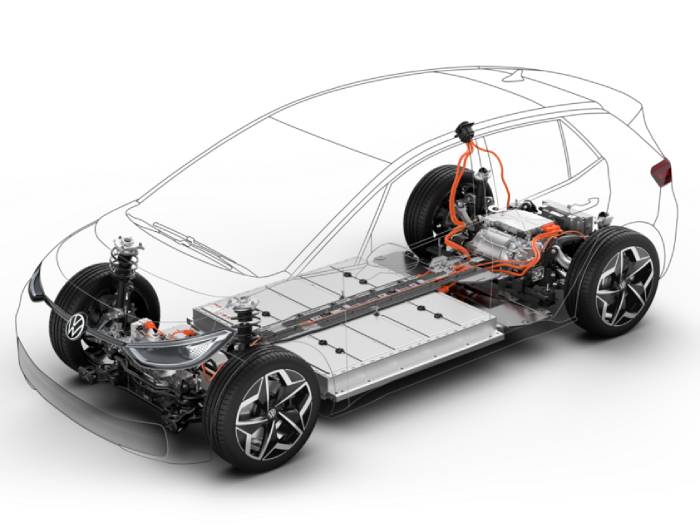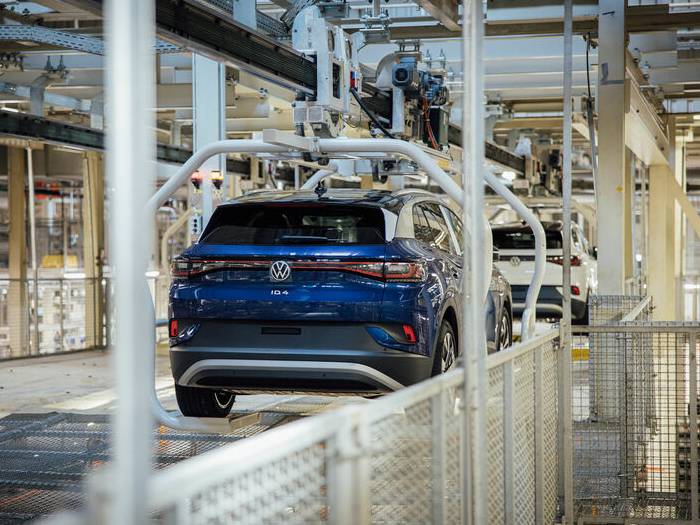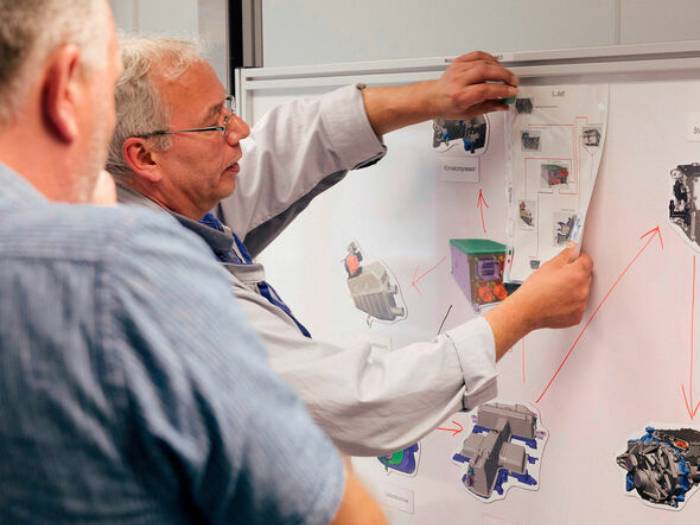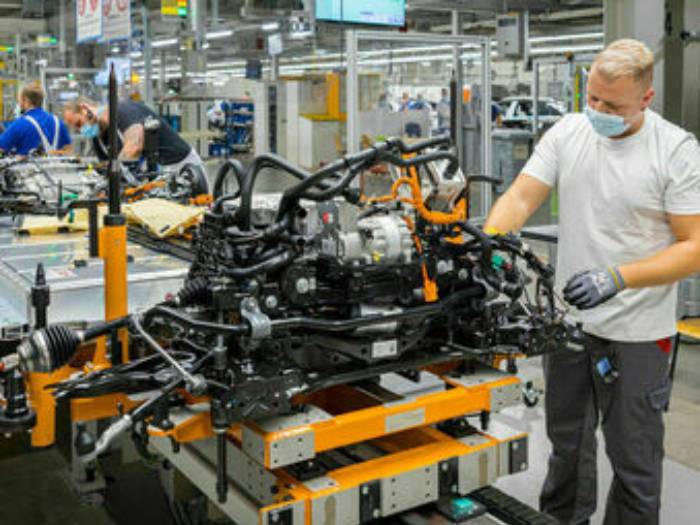Zwickau, one plant for six Volkswagen Group's electric models
In recent weeks, the first Volkswagen ID.5s have come off the production line in Zwickau, where six electric models of the Volkswagen Group are assembled. The plant in Saxony has been completely converted for the production of zero-emission cars. Here's how.
Different models, same assembly

The Zwickau plant produces very different models, from the compact Volkswagen ID.3 to the Audi Q4 e-tron SUV. While the exterior may be completely different, underneath the bodywork hides a long list of similar components. For example, the bumper, which differs in design but is identical in terms of the screws used or the tools required for the assembly. Robert Pahlow, an expert in the start-up of production lines, can count 120 "identical concepts".
Another point of contact is the software, which is the same for all models produced in Saxony. All of this is facilitated by the shared technical basis, the Modular Electric Drive Matrix (MEB) - the Volkswagen Group's modular platform designed for 100% electric models, which allows long ranges, plenty of space inside and strong performance.
Production flexibility

Producing six models in one plant requires a great deal of flexibility and versatility, just as it does in Zwickau. The employees always know which components are to be fitted to a model, thanks to measures such as a special indicator (called the "PR number") that ensures maximum precision at every stage of construction.
Due to the high demand for electric cars, two production lines are in operation in the plant: one for Volkswagen ID.3 and CUPRA Born, the other for Volkswagen ID.5, Audi Q4 e-tron and Audi Q4 Sportback e-tron. These models are joined by the VW ID.4, which can be built on either line, flexibly adapting to the situation. In total, six production start-ups for three of the Group's brands were completed at the Volkswagen plant in the space of two years.
Reducing differences
Ensuring a wide variety of choice for customers while reducing unnecessary differences is one of the secrets of making electric vehicle production more efficient and reducing costs. One example? At the Zwickau plant more than 100 body versions for previous Golf models were built, counting the various models, while today in most cases only two variants are produced for electric cars.
The importance of training

In order to make Zwickau the first major production plant specialised in the exclusive assembly of electric cars, Volkswagen invested a total of 1.2 billion Euros in the conversion operations. A key factor in the transformation was the training of all 9,000 employees, amounting to more than 20,000 days of specific training on electric mobility. Specifically, 1,500 employees were certified to work on high-voltage systems.
Pioneer in electrics
In the past, iconic cars such as the Golf and Passat were built in Zwickau; now, thanks to electric mobility, the German site has taken on the role of a pioneer among production plants. "Zwickau has been at the forefront of automotive engineering since the birth of the first electric models, and this is something that many people can identify with", explains Frank Schemmel, an expert in the construction of zero-emission cars. A feeling of pride that is reflected in the high quality and high levels of committment.
Team strength

In addition to the plant's own employees, the Zwickau plant can count on the support of the Volkswagen, Audi and CUPRA teams. More than 100 specialists from the various brands - experts in production, development, procurement and quality control - supported the start-up of the production lines.
Even after the start of operations, Volkswagen technicians from other plants, as well as those from Audi and CUPRA, remain at the Zwickau site. "This approach is hugely beneficial", emphasises Robert Pahlow, "because it allows us to clarify many questions quickly".
Source: Volkswagen - Shaping Mobility Hub
VGI | Responsible OU: VP | Creation date: article date | Class 9.1
